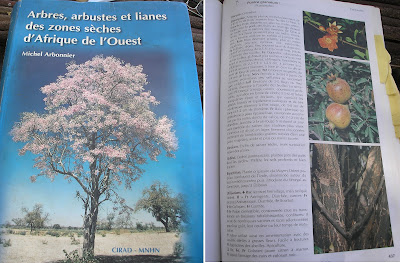Sadly I have not updated the posts here as I hoped I would have. I've been home now for 6 weeks and will try to do better of updating here and on another blog I will be writing on for my new position, which I will also write about.
Below was written my last week of service while still in Grenada.
__________________________________________________
My year in Grenada is finishing up this week I am finishing projects, saying good byes, and packing up. I do not think this is the end of Grenada for me. I really enjoyed this island. And heard or was told that in the lower Caribbean, it truly is one of the friendliest and nicest island.
In this past year I was able to:
Below was written my last week of service while still in Grenada.
__________________________________________________
My year in Grenada is finishing up this week I am finishing projects, saying good byes, and packing up. I do not think this is the end of Grenada for me. I really enjoyed this island. And heard or was told that in the lower Caribbean, it truly is one of the friendliest and nicest island.
In this past year I was able to:
- Meet with 50 established beekeepers and 30 people interested in
beekeeping, assessed their knowledge and resources to understand
feasibility of needed trainings, equipment and appropriate technologies.
- Documented known 86 beekeepers and kept a contact list of 31 interested
people for the Association and others use.
- Offered assistance to all and worked one-on-one with 16
beekeepers trouble shooting problems, learning and sharing best practices
and using appropriate technology and techniques for the limitations of the
island.
- Monitored and evaluated skills and advancement over the course
of working with each of the beekeepers.
- Supported the Ministry of Agriculture extension agent with
visiting beekeepers to assist them in their ventures. Knowledge and
expertise was shared in terms of exporting, value chains in Grenada and
importing of goods beekeepers would need.
- Created and implemented course curriculum specific to the
island of Grenada: Introduction to Successful Beekeeping: What you need to
get started and Bee Pests, Disease & Integrated Pest Management:
Understanding and Identification. Training 25 people over all these 2
courses given multiple times and locations to make it more available.
- Created, managed and communicated through Facebook page, Gmail
and WhatsApp application to keep beekeepers, interested people and public
aware of events, classes and information.
- Through further research and fieldworks, capturing of information from beekeepers and other people on the island Ms. Wannarka correlated, designed and wrote 160-page electronic book “Honey Bee Plants in Grenada, Eastern Caribbean: Nectar, Pollen, and Propolis source plants” to assist beekeepers, interested people, farmers and others conserve and increase bee plant fodder and knowledge on the island. The book was sent via email, WhatsApp and the Facebook page to beekeepers, interested people and other contacts made through the past year.
- Attending monthly was able to attend the St. George’s University Bee College in May 2015 and there met 14 other beekeepers from the Caribbean and Florida University that she kept in touch with and shared information with.
- Assisting Belmont Estate, an Agro-tourism historic plantation. Specifically helping with their Goat Dairy project one day a week with communication from a U.S. based manager to the Belmont estate office handling the payroll, encourage staff and oversee overall process. This allowed Ms. Wannarka to see and understand the financial and payroll process of a business on the island. Working with the staff of the Goat Dairy Project and Belmont estate was a pleasure.
- Liaisoned with other organizations on the island to share her expertise and knowledge with. Grand Bras Estate is a historic 100-acre farm that employs 20 people for year around vegetable production. Through discussion using bees for pollination was found to be possible and helpful to improve the vegetable crop in a few fields on a trial basis.
- Attended community meetings such as GRENED, Grenada Education and Development Programme; SADO, St. Andrew’s Development Organization and Grenada Creole Society Meeting and Lecture in Concord, St. John’s. Ms Wannarka also participated in a panel for STEM Opportunities in the Peace Corps Webinar for Western Pennsylvania to share Peace Corps and Response experience
There is no comparing this service to my last in Senegal, West Africa. There are many cultural similarities, but everything else now looking back at it with a month+ perspective is good.



















